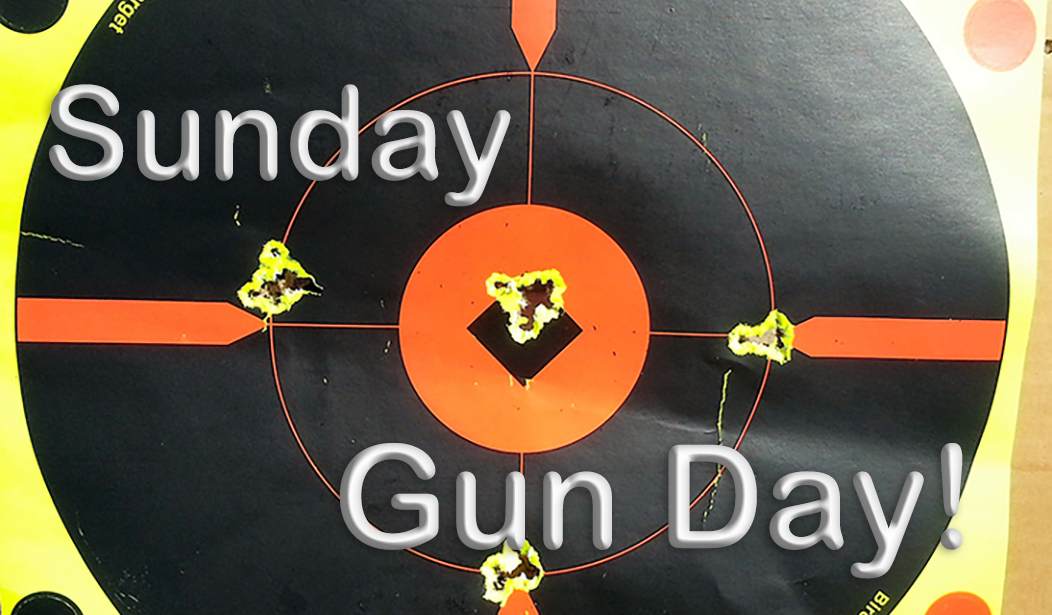Wow!
I’ve always held to the notion that you can shoot little stuff with a big gun, but you can’t shoot big stuff with a little gun. Now there are limits to this, of course. One wouldn’t use a 155mm howitzer to shoot a rabbit, but neither would you try to shoot a lion with a .22 rimfire rifle.
When hunting in Colorado during my years there, loyal sidekick Rat and I frequently went afield with both elk and mule deer tags in our pockets, and because we would take targets of opportunity in either species, I would generally tote along my custom .338 Winchester Magnum, Thunder Speaker (yes, I name my favorite guns), as it would handle the biggest bull elk with aplomb. I can tell you from experience that it will drop a 150-pound mulie right now.
It is as Robert Ruark wrote: Use enough gun. Now I prowl forests and bottomlands where moose and grizzlies roam, and if it’s not Thunder Speaker, it’s a .45-70 Marlin 1895G – because I use enough gun.
But there are some guns, some cartridges, that do constitute overkill. It’s difficult to countenance a gun that would be overkill on a bull Alaska moose weighing close to a ton, or an 800-pound grizzly that can rip the door off a pickup and run 35 miles per hour. But there is one rifle and cartridge combo that seems a bit of overkill for anything alive on the planet today, and from that comes its name: The .577 Tyrannosaur.
The Cartridge
Frank C. Barnes’ 16th Edition of Cartridges of the World has this to say about this monster of a cartridge:
The .577 Tyrannosaur was designed in 1993 in response to the demands of two professional African hunting guides who’d had bad experiences with lesser chamberings as backup guns when clients were hunting dangerous species. There is no secret to the design: This is the longest, largest-diameter case that will properly function through a standard-size, bolt-action rifle. Bullet diameter is limited by the necessity of a sufficient case shoulder to control headspace. Design pressure assures proper functioning in even the hottest climes and will not overstress the action.
That book describes two loadings: 177.5 grains of RL-19 launching a 750-grain solid at 2,473 feet per second for 10,180 foot-pounds of energy at the muzzle, and another load of unknown charge launching the same bullet at 2,400 feet per second for 9,590 foot-pounds of energy, just in case you want to take it easy that day.
By comparison, my favored load in Thunder Speaker launches a 250-grain pill at about 2,800 feet per second, for a mere 4,100 foot-pounds of muzzle energy. So, less than half of the walloping power of the .577 Tyrannosaur.
While this seems like a handloader-only proposition, there is at least one commercial offering, from a company called Ammo-One; this is a $100 a shot proposition, the rounds are sold by the each. So yeah, if you’re lucky enough to score one of these monsters, better buy a magnum-length loading press.
Read More: Sunday Gun Day Vol. II Ep. XLVII - Adventures in Handloading
So, with a cartridge like that, you need a rifle to match it.
The Gun
Interestingly enough, the rifle built by the now-defunct A-Square to shoot this massive cartridge, the A-Square T-Rex, was built on a Great War-era action: The Remington P-14 action, which was designed originally around the .303 British round. It’s a better choice than one might think; the P-14 and its counterpart, the P-17, were based on a big, tough, durable action with a smooth bolt throw, popular for many years for conversion to sporter form. The P-14, being designed for the rimmed .303 British, took a magnum case head without modification.
In its original form, the P-14 was essentially a Mauser-style action, made of nickel steel, with a long action capable of handling magnum-length rounds. The P-14 and P-17 rifles had good reputations during and after the Great War; users insist that the action was smoother than the regular ’98 Mauser or the 1903 Springfield. The original guns had a “pot-bellied” appearance to accommodate the magazine, not something that the new A-Square gun would have.
This was the action around which the T-Rex was built.
There were, as near as I’ve been able to determine, only 12 of these guns built. Aside from that big, tough, Great War-era action, they had what looks to be a 24” heavy sporter barrel, a decent walnut stock, and the couple I’ve seen or seen photos of had an extended eye-relief scope mount. Granted, iron sights may be more the ticket for a gun like this; if you’re facing a charging, eight-ton carnosaur, it may be easier to quickly acquire your target with irons.
Also, remember the pot-bellied appearance of the P-14? No such thing pertained to the T-Rex; these guns have big, hefty stocks to add to the weight.
Recoil in one of these things is no doubt bracing, but the 15 ½ pound weight for a fully loaded specimen no doubt helps.
Read More: Sunday Gun Day Vol. III Ep. IX - A Grand Old Name, Holland & Holland
Imagine Shooting It!
Now, the literature says that this beast of gun and cartridge is no worse to shoot than… well, most elephant guns. I’m not sure how encouraging that is. The only gun in that range I’ve ever fired was a Holland & Holland .500 Nitro Express, and it gave me quite a welt on the cheek, but that was in part due to the stock being too short for me. Now, even though these rifles are rare indeed, it’s still possible to find some examples online of one being fired, sometimes with… well, let’s say a certain panache.
I’m not recoil-sensitive, nor am I shy about firing a big rifle. But this? I’m not so sure. Something like the .577 Tyrannosaur ought to be approached with some circumspection. But if my bucket-list item of building a time machine so I can go back to the Cretaceous and hunt a for-real bull T. rex ever comes true, I may come looking for one of these.Come to think about it, maybe I’d go with an armored personnel carrier.














